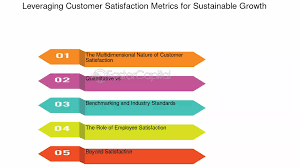In such a digital transformation and high-expectation world where customers demand more than being a transaction value supposed to run transaction snappier, organisation efforts must exceed transaction based interactions. 1) Customer satisfaction (CSAT) Customer satisfaction (CSAT) has become a core indicator that shows how well a business is meeting the customer needs. Yet, one of the most powerful, but underestimated, resources for raising CSAT is customer feedback.
This post discusses how critical customer feedback is to driving up CSAT scores. You’ll see how to gather, analyze, and act upon feedback in a meaningful way, and how this can result in better customer loyalty, lower churn, and a more adaptive company. We’ll also discuss how feedback’s influence on the development of customer experience strategies is magnified by modern day technologies like AI and data analytics.
Why CSAT Metrics Matter
What is CSAT?
Customer Satisfaction Score (CSAT) measures how satisfied customers are with a product, service, or interaction. Typically collected via post-interaction surveys, CSAT scores are expressed as a percentage, calculated from the number of positive responses divided by the total number of responses.
Business Impact of High CSAT
- Customer Retention: Satisfied customers are more likely to stay loyal.
- Brand Advocacy: High CSAT leads to positive word-of-mouth and online reviews.
- Revenue Growth: Happy customers spend more and churn less.
- Operational Insights: CSAT reveals how well internal processes align with customer expectations.
The Role of Customer Feedback in Shaping CSAT
Feedback as a Direct CSAT Indicator
Customer feedback—both solicited and unsolicited—directly reflects satisfaction levels. By capturing the voice of the customer (VoC), companies can better understand the root causes behind their CSAT scores.
Types of Customer Feedback
- Structured Feedback: Surveys, rating forms, and NPS (Net Promoter Score).
- Unstructured Feedback: Reviews, social media comments, support ticket texts.
- Behavioral Feedback: Usage patterns, clickstream data, and abandonment rates.
Bridging the Gap Between Feedback and Action
A common pitfall is collecting feedback without acting on it. The most successful businesses close the feedback loop by:
- Acknowledging customer input
- Analyzing feedback for trends
- Implementing changes
- Notifying customers of the actions taken
Strategies to Use Feedback to Boost CSAT
1. Real-Time Feedback Collection
Use live chat popups, in-app surveys, or email follow-ups immediately after customer interactions to capture accurate impressions. Tools like Qualtrics, Medallia, or Hotjar offer robust solutions for real-time data gathering.
2. Sentiment Analysis Using AI
Natural Language Processing (NLP) tools can evaluate unstructured data from social media or support tickets. AI helps detect emotions and categorize issues automatically, enabling faster and more precise resolutions.
3. Customer Journey Mapping
Feedback at various touchpoints helps refine customer journey maps. This allows businesses to:
- Identify pain points
- Prioritize improvements
- Enhance customer experience systematically
4. Empowering Frontline Staff
Train customer-facing teams to respond empathetically to feedback. Empower them with tools and autonomy to resolve issues on the spot, which can significantly increase satisfaction rates.
5. Closed-Loop Feedback Systems
Create a structured approach to ensure that every piece of feedback is acknowledged and acted upon. This could involve automated follow-up systems, internal feedback dashboards, and regular customer review sessions.
Case Studies: Companies Winning with Feedback
Amazon
Amazon uses a robust review and rating system that directly influences product recommendations and seller visibility. By acting on this data, Amazon enhances both product quality and customer service.
Airbnb
Airbnb analyzes host and guest reviews using machine learning to identify service quality issues. This helps maintain trust and improve experiences.
Zappos
Renowned for its customer service, Zappos leverages feedback to continuously train its agents and refine policies. Their focus on satisfaction has cultivated a loyal customer base.
Future Outlook: AI, Data Analytics, and Automation in Feedback Management
AI-Driven Insights
Advanced analytics tools now use machine learning to predict CSAT trends based on historical feedback. This allows companies to proactively address issues before they escalate.
Predictive Feedback Loops
Combining customer behavior data with feedback allows for predictive modeling. Businesses can anticipate customer needs and take pre-emptive actions to boost satisfaction.
Automation for Speed and Scale
Chatbots, automated surveys, and CRM integrations make it easier to collect and act on feedback at scale. Automation ensures no feedback is lost, and responses are timely.
Feedback from customers is a gold mine to companies that want to up their CSAT numbers. And when harnessed appropriately, analysed smartly and acted upon quickly, it has the power to revolutionise customer experience strategies and power long-term growth. By leveraging advanced technologies such as AI, data analytics, and automation, businesses can take their customer satisfaction initiatives to the next level. The trick is to listen, learn, and continually test and adapt.
FAQ
What is the best way to collect customer feedback?
The best approach combines real-time surveys, post-interaction emails, and passive collection methods like monitoring reviews and social media.
How often should I review feedback for CSAT improvement?
Continuously. Weekly or bi-weekly reviews are ideal for agile response strategies.
Can AI truly understand customer sentiment?
Yes. AI tools using NLP can detect emotional tone, urgency, and even sarcasm in feedback, offering deeper insights.
How do I know if feedback efforts are improving CSAT?
Track changes in your CSAT score over time in relation to specific initiatives implemented from feedback.
Is it necessary to respond to all feedback?
Ideally, yes—especially negative feedback. It shows customers you value their input and are committed to improvement.